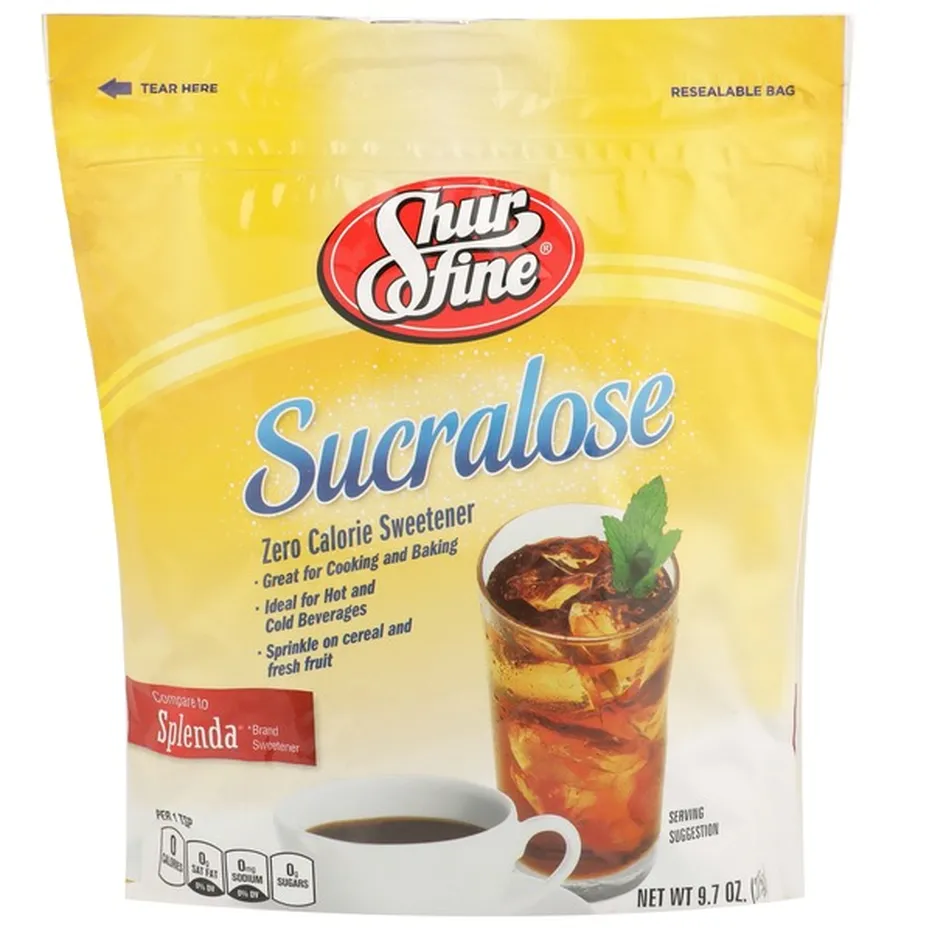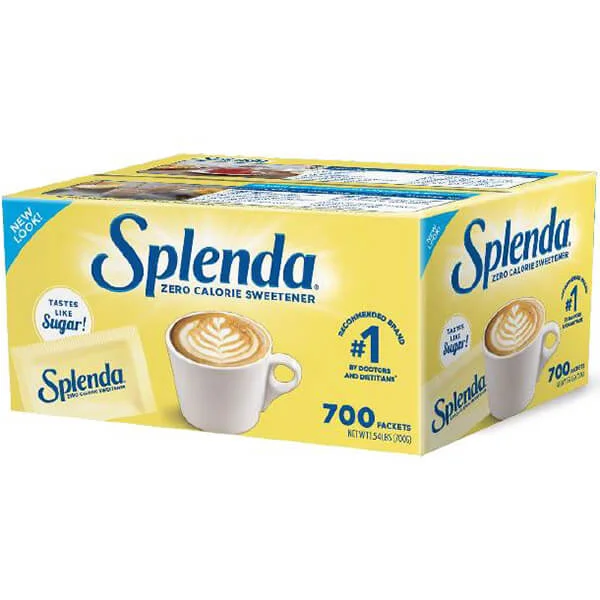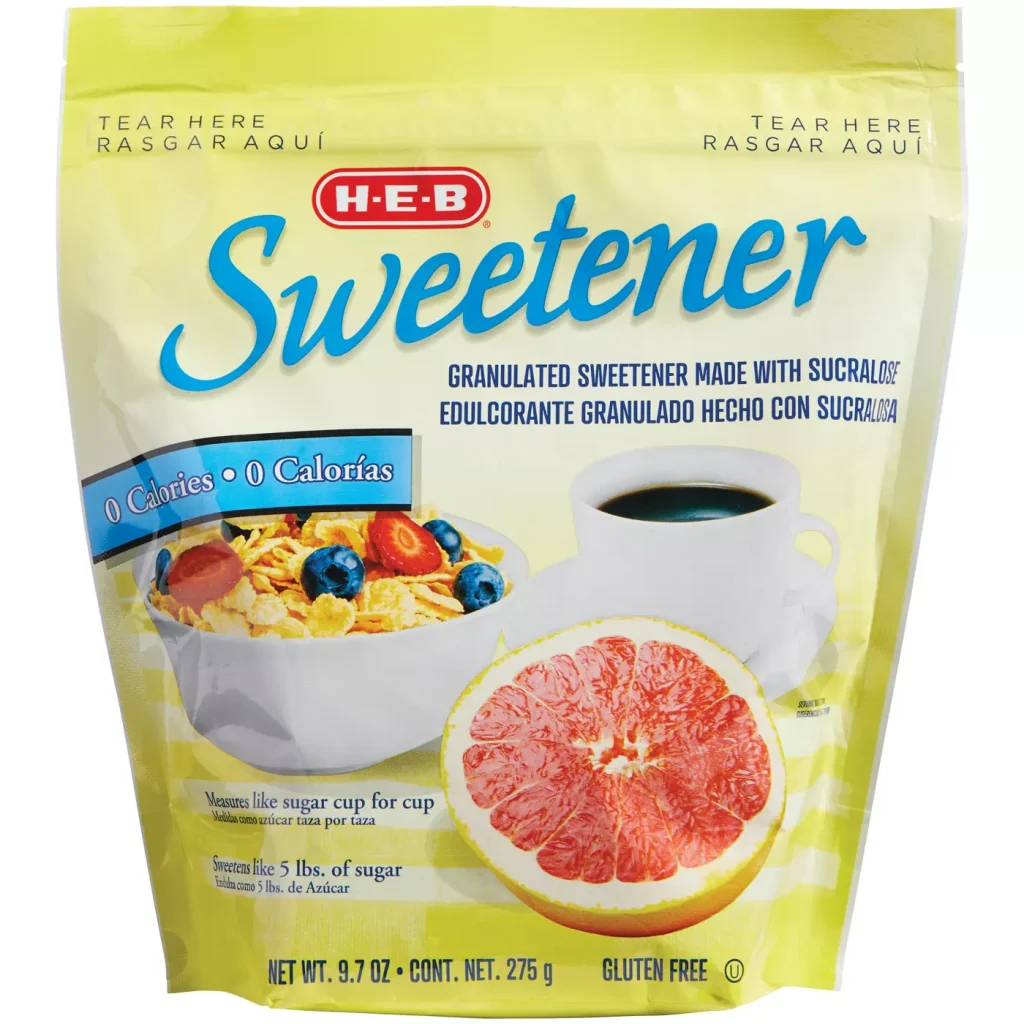What’s Sucralose(Splenda) ?
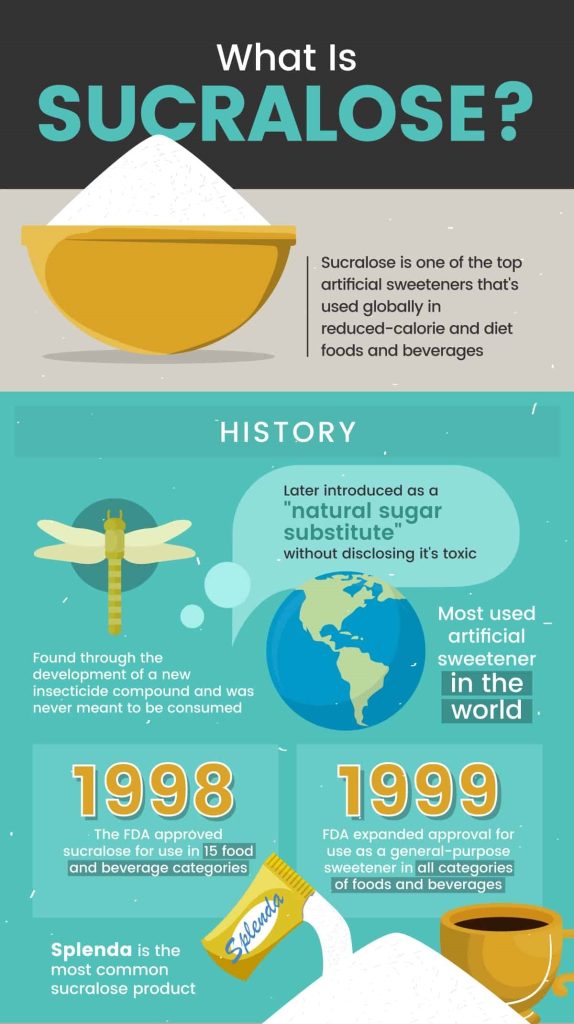
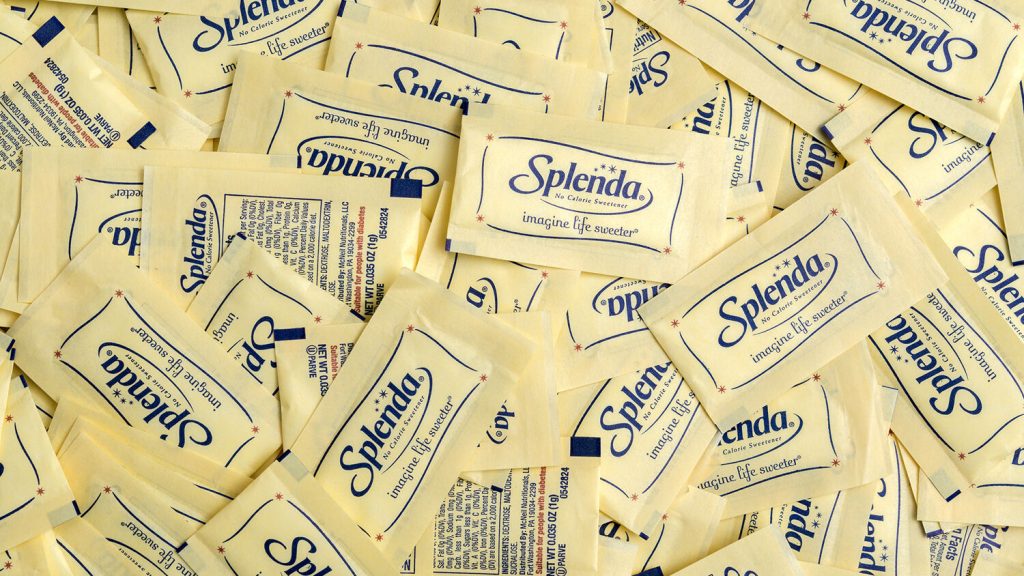
Sucralose is a no-calorie sweetener that can be used to lower one’s intake of added sugars while still providing satisfaction from enjoying the taste of something sweet. While some types of sweeteners in this category are considered low-calorie (e.g., aspartame) and others are no-calorie (e.g., sucralose, monk fruit sweeteners and stevia sweeteners), collectively they are often referred to as sugar substitutes, high-intensity sweeteners, nonnutritive sweeteners or low-calorie sweeteners.
Like other no-calorie sweeteners, it is intensely sweet. It is about 600 times sweeter than sugar, so only small amounts of sucralose are used to match the sweetness provided by sugar. It is permitted by the U.S. Food and Drug Administration (FDA) for use as a general-purpose sweetener, meaning it can be used as an ingredient in any type of food or beverage. Sucralose is exceptionally stable, so foods and beverages sweetened with sucralose stay sweet under a wide range of conditions. This includes frozen foods like ice cream and other frozen desserts, as well as foods that need to be heated to high temperatures, like baked goods and foods that require sterilization.
However, a recipe that uses sucralose in place of sugar may turn out slightly different because, in addition to sweetness, sugar plays several roles related to volume and texture in recipes but varies based on the type of recipe.
Sucralose is also used in tabletop sweeteners. There are numerous brands of sucralose-based tabletop sweeteners. The most common brand in the U.S. is Splenda Original.
How is Produced ?
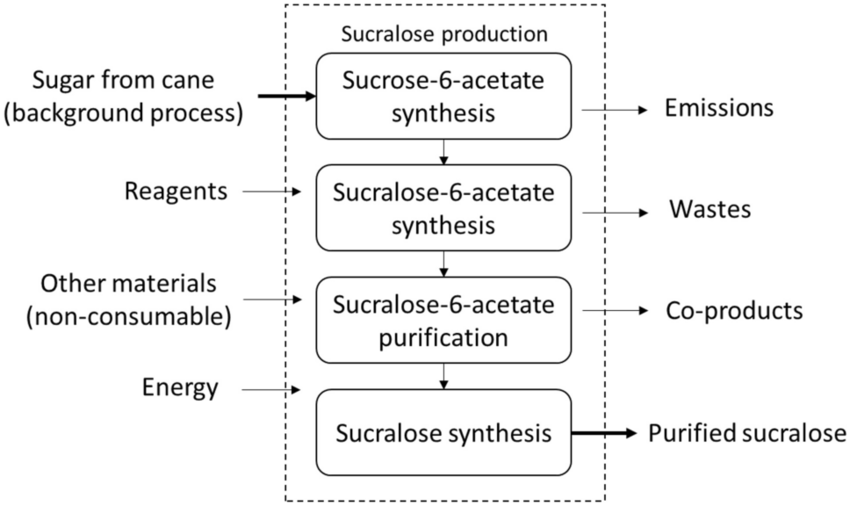
It is made from a process that begins with regular table sugar (sucrose); however, it is not sugar. Three select hydroxyl groups on the sucrose molecule are replaced with three chlorine atoms. Sucralose’s structure prevents enzymes in the digestive tract from breaking it down, which is an inherent part of its safety.
Benefits
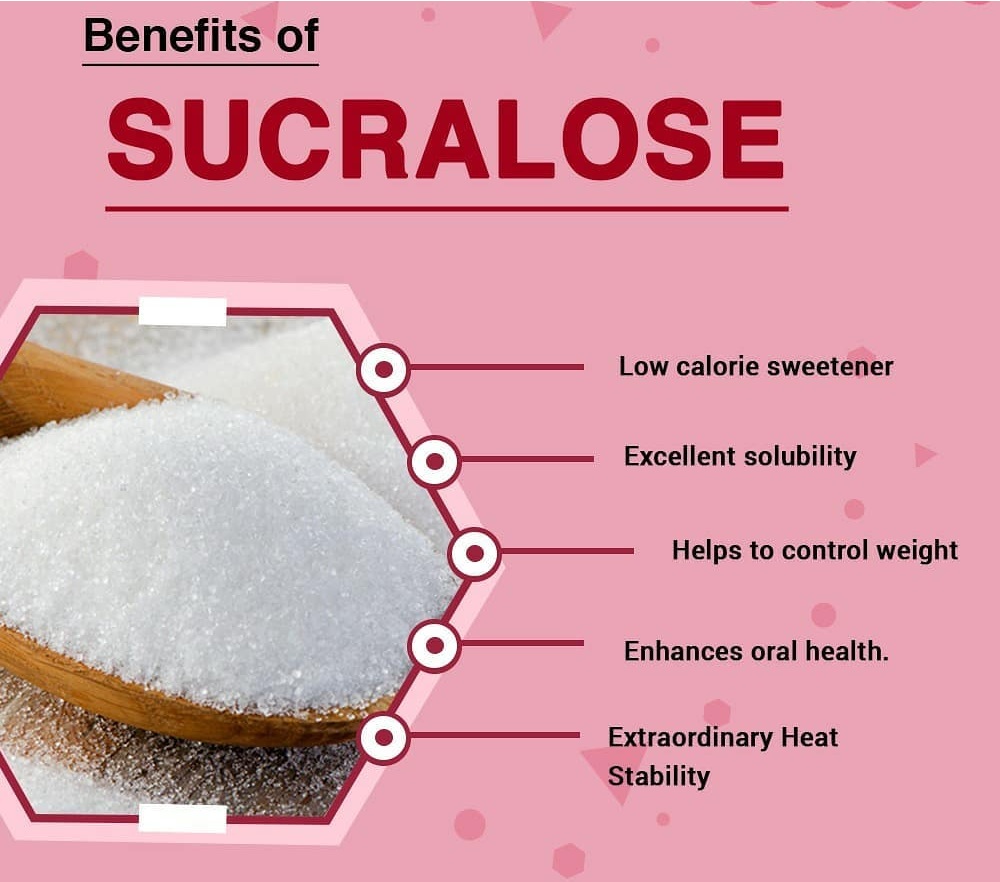
Effects on blood sugar and insulin
Most studies show that sucralose has little or no effects on blood sugar and insulin levels.
For instance, one small study found that daily consumption of sucralose had no impact on sugar metabolism or insulin sensitivity in healthy adults.
had similar findings, reporting that consuming sucralose with each meal for 12 weeks had no effect on insulin or fasting blood sugar levels.
However, a few other studies have turned up conflicting results, with some noting that sucralose could reduce insulin sensitivity and increase blood sugar and insulin levels.
Therefore, more high quality research on the effects of sucralose on blood sugar and insulin levels is still needed.
Baking with splenda may be harmful
Splenda is considered to be heat resistant and good for cooking and baking. However, recent studies have challenged this.
It seems that at high temperatures, Splenda starts to break down and interact with other ingredients.
One 2010 study found that heating sucralose with glycerol, a compound found in fat molecules, produced harmful substances called chloropropanols. These substances may raise cancer risk.
On the other hand, a more recent study reported that splenda doesn’t form these compounds when heated and is safe for cooking and baking. However, note that this study was funded by Tate & Lyle, the manufacturers of Splenda.
While more research is needed, some people may prefer using other sweeteners when baking at temperatures above 350°F (175°C) in the meantime.
Does sucralose affect gut health?
The friendly bacteria in your gut are extremely important for your overall health.
They may improve digestion, benefit immune function, and reduce your risk of many diseases.
Interestingly, one 2-week study found that consuming 20% of the acceptable daily intake for sucralose per day had no effect on the beneficial bacteria in the gut.
Another study showed that consuming high doses of sucralose for 7 days did not alter the gut microbiome.
However, although these studies suggest that short-term sucralose consumption is unlikely to affect gut health, animal studies on long-term splenda intake have found that it could have negative effects.
For example, one study in mice showed that showed that 16 weeks or 4 months of low-dose (lower than the recommended amount) sucralose consumption disrupted the balance of the gut microbiome and increased inflammation.
Therefore, more studies on the long-term effects of sucralose on gut health in humans are needed.
Does splenda make you gain or lose weight?
Products that contain zero-calorie sweeteners are often marketed as being good for weight loss.
One review of 56 studies found that non-nutritive sweeteners could have a small beneficial effect on body mass index (BMI). However, researchers also noted that most of the studies were low quality.
On the other hand, a 2014 review of observational studies found no connection between artificial sweetener consumption and body weight or fat mass, but reported a small increase in body mass index (BMI).
Meanwhile, according to the review, randomized controlled trials — the gold standard in scientific research — show that artificial sweeteners reduce body weight by around 1.7 pounds (0.8 kilograms) on average.
Foods and uses of Sucralose
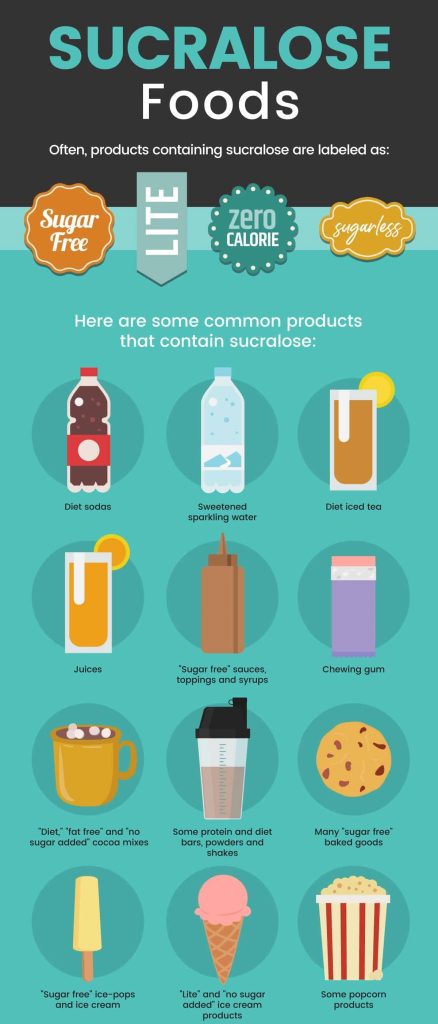
Splenda, is used in many food and beverage products that are marketed as healthier options. Sometimes, you wouldn’t even know that sucralose is in the bottled beverage or packaged food that you pick up from the grocery store.
It’s even found in toothpastes, lozenges and vitamins.
The best way to determine whether or not it is used in a product is to check the ingredient label. Sometimes the box or bottle of a product says right on the front that it’s made with Splenda.
Often, products containing sucralose are labeled as “sugar free,” “sugarless,” “lite” or “zero calorie.” Look out for these slogans because they usually indicate that some kind of artificial sweetener is used in the product.
Here are just some of the products that contain sucralose:
- Some diet sodas
- Some sparkling waters
- Diet iced tea products
- Some juice products
- “Sugar free” sauces, toppings and syrups
- Chewing gum (including “sugarless” products)
- “Diet,” “fat free” and “no sugar added” cocoa mixes
- Some protein and diet bars, powders and shakes
- Many “sugar free” baked goods
- “Sugar free” ice-pops and ice cream
- “Lite” and “no sugar added” ice cream products
- Some popcorn products
- “Sugar free” and “light” yogurt products
- “Sugar free” or “light” hard candy
- “Sugar free” chocolates
- “Sugar free” mints and lozenges
- Some toothpastes
Is sucralose safe?
Like other artificial sweeteners, it is highly controversial. Some claim that it’s entirely harmless, but evidence on its safety and long-term health effects is conflicting.
For example, though most research shows that it is unlikely to increase blood sugar or insulin levels, other studies suggest that it could have negative effects.
Additionally, while short-term studies in humans have found that it has no impact on gut health, long-term animal studies have turned up conflicting results.
The safety of sucralose at high temperatures has also been questioned. Therefore, some people may want to opt for other sweeteners when cooking or baking.
That being said, the long-term health effects are still unclear, but health authorities like the Food and Drug Administration (FDA) do consider it to be safe.
Sucralose Compare to Stevia
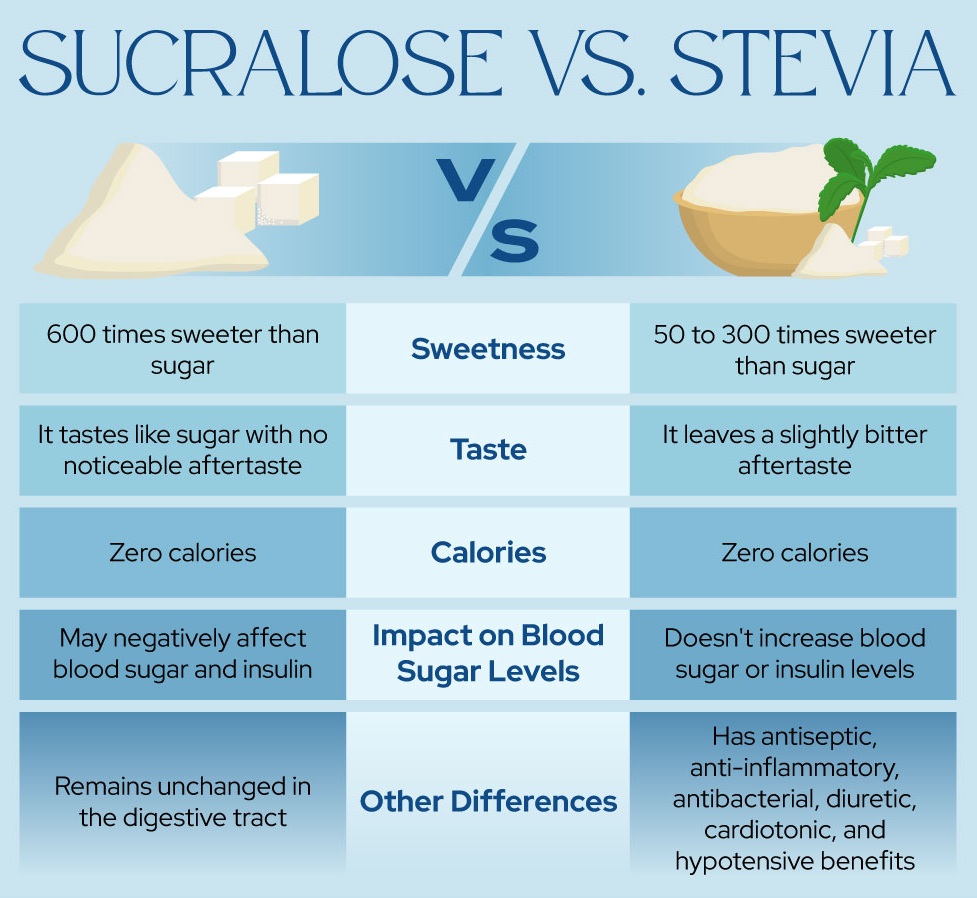
Advantage of Artificial Sweetener
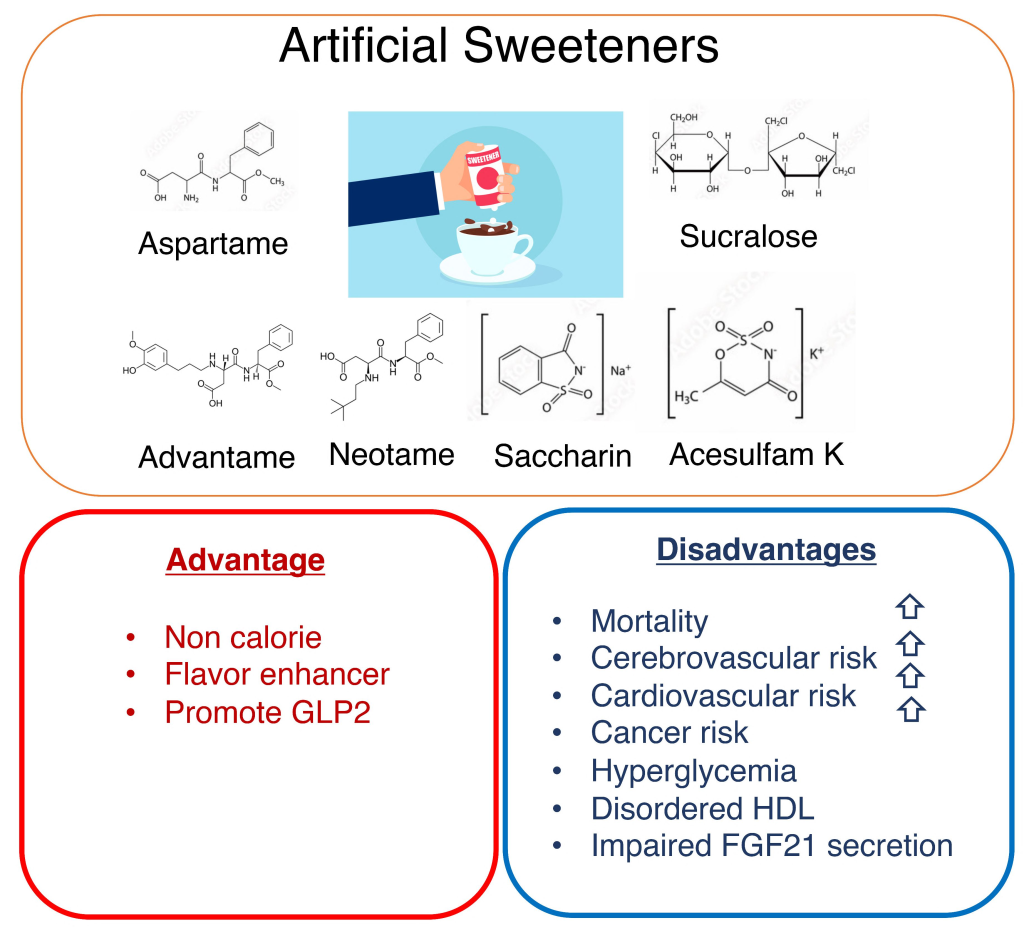
The main brand Splenda in the market
